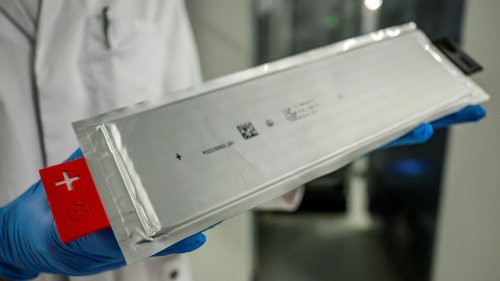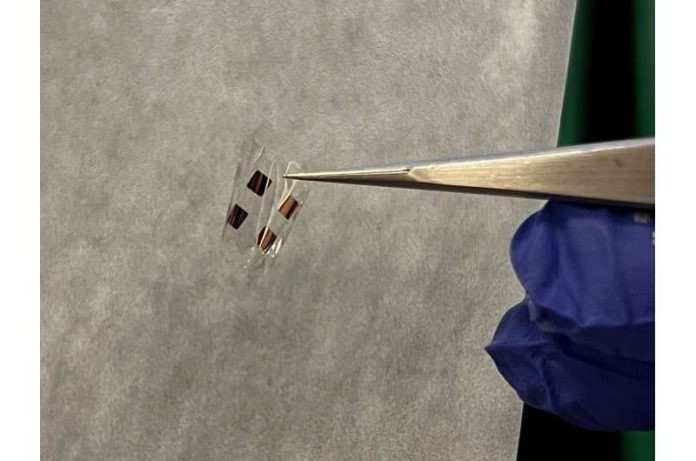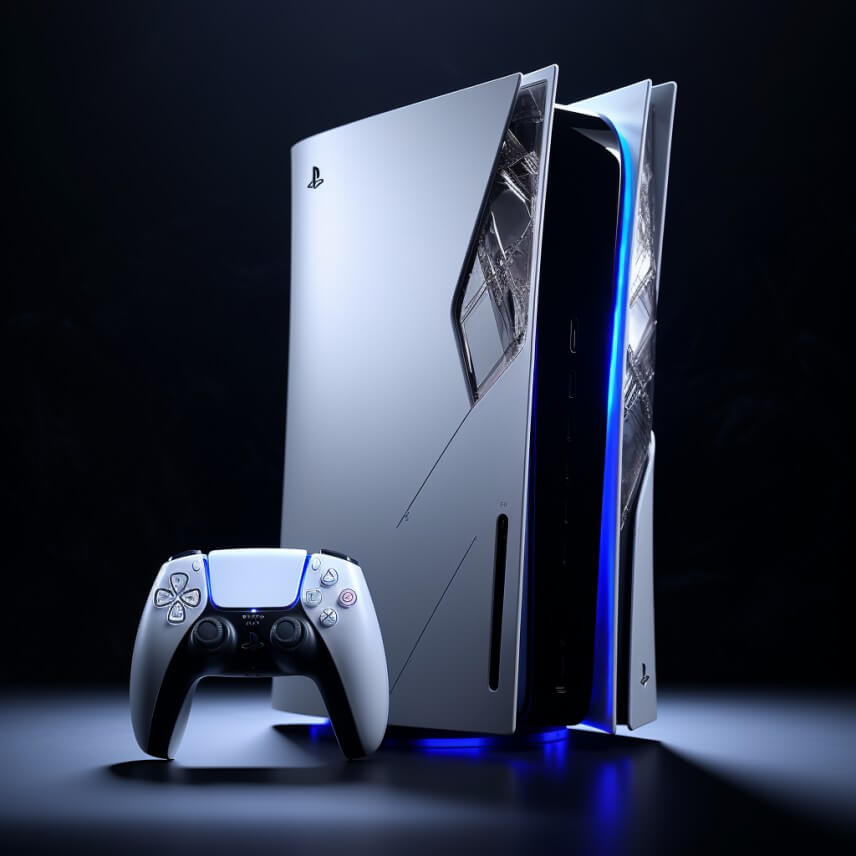Scientists have found a simple trick that could dramatically change how our batteries perform. A lithium-ion battery, of the kind used in everything from our phones to our cars, is usually charged up soon after it is first made. That first charge is key: it decides how long the battery will work for, and when it will eventually deteroriate. Now researchers have found that if that first charge is done with unusually high currents, it dramatically changes how those batteries perform. When that happened, the batteries’ lifespan was improved by 50 per cent and the initial charge took just 20 minutes, compared with 10 hours usually. The researchers were also able to find the changes in the electrodes of the battery that make that huge boost in lifespan and performance possible. “This study is very exciting for us,” said Steven Torrisi, from the Toyota Research Institute, who worked on the research. “Battery manufacturing is extremely capital, energy and time intensive. It takes a long time to spin up manufacturing of a new battery, and it’s really difficult to optimize the manufacturing process because there are so many factors involved.”
Researchers at Stanford Linear Accelerator Center (SLAC) have uncovered a surprising method to boost battery performance. A recent study revealed that charging batteries at unusually high currents for the first time can extend their lifespan by 50 percent and reduce the initial charging time from 10 hours to just 20 minutes. With the aid of scientific machine learning, the researchers were able to identify precise modifications to the battery electrodes that are responsible for the increased performance and lifespan. According to the team led by SLAC professor Will Chueh, these findings will be extremely helpful to battery producers who want to enhance their output and optimize their workflows.
When batteries are charged, lithium ions flow to the negative electrode of the battery; when it is used, they go back out and the positive electrode. That process is key to both using and charging the lithium-ion batteries that power so much of our technology today. A fresh battery will have its positive electrode entirely full of lithium. But over time, some of that lithium is deactivated, which is what accounts for the gradually degraded performance of such batteries that means they often need to be replaced. Researchers found that deliberately losing some supply of lithium at the start actually helped it keep more of it in the future, however. That lithium makes a special layer that forms on the negative electrode and then protects it from degrading over time. Researchers compared it to emptying a bucket slightly before carrying it. While that means losing some water initially, the remaining water would be less likely to splash out of the bucket later on, preserving the remaining water.
The research is described in a new paper, ‘Data-driven analysis of battery formation reveals the role of electrode utilization in extending cycle life’, published in Joule.
The initial charge of a lithium-ion battery is more significant than it may seem. It establishes the battery’s performance and lifespan thereafter, namely the number of cycles of charging and discharging it can withstand before degrading. The team constructed pouch cells, in which the positive and negative electrodes are encircled by an electrolyte solution in which lithium ions are free to travel, in order to better understand what occurs during the battery’s first cycling. Lithium ions move into the negative electrode of a battery during charging to be stored. When the battery becomes low, the electrons exit the cell and move to the positive electrode, where they start to flow again. This process powers everything from electric vehicles to the electrical grid. According to researchers, a fresh battery’s positive electrode is 100 percent lithium-filled. However, a portion of the lithium is deactivated with each charge/discharge cycle. Reducing those losses increases the battery’s operational life. Strangely enough, one strategy to reduce the overall loss of lithium is to purposefully lose a significant portion of the initial lithium supply during the battery’s first charge. It’s comparable to making a tiny investment that will eventually pay off handsomely.
“Formation is the final step in the manufacturing process, so if it fails, all the value and effort invested in the battery up to that point are wasted,” said Xiao Cui, the lead researcher for the battery informatics team in Chueh’s lab, in a statement. Manufacturers typically charge new batteries at low currents during the first cycle, aiming to create the strongest solid electrolyte interface (SEI layer). However, there is a drawback: charging at low currents takes longer, costs more money, and may not always produce the best results. It was, therefore, encouraging news when recent research revealed that faster charging at greater currents does not impair battery performance. However, scientists desired to learn more. Numerous elements contribute to the creation of SEI during the initial charge, of which the charging current is just one. It’s a daunting endeavor to test every potential combination of them in the lab and determine which one performed best. To address the issue, the research team employed scientific machine learning to pinpoint the key factors for optimal battery performance. Surprisingly, they found that just two variables—charging temperature and current—were crucial. Their experiments revealed that charging at higher currents dramatically extended battery lifespan by 50 percent. Although this approach deactivated about 30 percent of lithium upfront, compared to 9 percent with traditional methods, it had a beneficial effect. Cui says the process is similar to removing some water from a full bucket before carrying it, which reduces spillage. Similarly, deactivating more lithium ions during the initial charge creates additional headroom in the positive electrode, enabling it to cycle more efficiently. This adjustment enhances the overall performance and longevity of the battery. “This understanding is crucial for finding the best balance between battery performance and manufacturing efficiency,” said Cui. The details of the team’s research were published in the journal Joule.
If this research can be translated to real-world lithium-ion battery production, as the researchers believe, it may soon be the case that smartphones offer good battery performance for more than a couple of years, and camera batteries deliver consistent performance for a very long time.
In a study published today in Joule, researchers at the SLAC-Stanford Battery Center report that giving batteries this first charge at unusually high currents increased their average lifespan by 50% while decreasing the initial charging time from 10 hours to just 20 minutes. Just as important, the researchers were able to use scientific machine learning to pinpoint specific changes in the battery electrodes that account for this increase in lifespan and performance—invaluable insights for battery manufacturers looking to streamline their processes and improve their products.
The study was carried out by a SLAC/Stanford team led by Professor Will Chueh in collaboration with researchers from the Toyota Research Institute (TRI), the Massachusetts Institute of Technology and the University of Washington. It is part of SLAC's sustainability research and a broader effort to reimagine our energy future leveraging the lab's unique tools and expertise and partnerships with industry. “This is an excellent example of how SLAC is doing manufacturing science to make critical technologies for the energy transition more affordable,” Chueh said. “We're solving a real challenge that industry is facing; critically, we partner with industry from the get-go.”
The results have practical implications for manufacturing not just lithium-ion batteries for electric vehicles and the electric grid, but for other technologies, too, said Steven Torrisi, a senior research scientist at TRI who collaborated on the research. “This study is very exciting for us,” he said. “Battery manufacturing is extremely capital, energy and time intensive. It takes a long time to spin up manufacturing of a new battery, and it's really difficult to optimize the manufacturing process because there are so many factors involved.”
Torrisi said the results of this research “demonstrate a generalizable approach for understanding and optimizing this crucial step in battery manufacturing. Further, we may be able to transfer what we have learned to new processes, facilities, equipment and battery chemistries in the future.”
To understand what happens during the battery's initial cycling, Chueh's team builds pouch cells in which the positive and negative electrodes are surrounded by an electrolyte solution where lithium ions move freely. When a battery charges, lithium ions flow into the negative electrode for storage. When a battery discharges, they flow back out and travel to the positive electrode; this triggers a flow of electrons for powering devices, from electric cars to the electricity grid.
The positive electrode of a newly minted battery is 100% full of lithium, said Xiao Cui, the lead researcher for the battery informatics team in Chueh's lab. Every time the battery goes through a charge-discharge cycle, some of the lithium is deactivated. Minimizing those losses prolongs the battery's working lifetime. Oddly enough, one way to minimize the overall lithium loss is to deliberately lose a large percentage of the initial supply of lithium during the battery's first charge, Cui said. It's like making a small investment that yields good returns down the road. This first-cycle lithium loss is not in vain. The lost lithium becomes part of a squishy layer called the solid electrolyte interphase, or SEI, that forms on the surface of the negative electrode during the first charge. In return, the SEI protects the negative electrode from side reactions that would accelerate the lithium loss and degrade the battery faster over time. Getting the SEI just right is so important that the first charge is known as the formation charge. “Formation is the final step in the manufacturing process,” Cui said, “so if it fails, all the value and effort invested in the battery up to that point are wasted.”
Manufacturers generally give new batteries their first charge with low currents, on the theory that this will create the most robust SEI layer. But there's a downside: Charging at low currents is time-consuming and costly and doesn't necessarily yield optimal results. So, when recent studies suggested that faster charging with higher currents does not degrade battery performance, it was exciting news.
But researchers wanted to dig deeper. The charging current is just one of dozens of factors that go into the formation of SEI during the first charge. Testing all possible combinations of them in the lab to see which one worked best is an overwhelming task. To whittle the problem down to manageable size, the research team used scientific machine learning to identify which factors are most important in achieving good results. To their surprise, just two of them—the temperature and current at which the battery is charged—stood out from all the rest. Experiments confirmed that charging at high currents has a huge impact, increasing the lifespan of the average test battery by 50%. It also deactivated a much higher percentage of lithium up front—about 30%, compared to 9% with previous methods—but that turned out to have a positive effect. Removing more lithium ions up front is a bit like scooping water out of a full bucket before carrying it, Cui said. The extra headspace in the bucket decreases the amount of water splashing out along the way. In similar fashion, deactivating more lithium ions during formation frees up headspace in the positive electrode and allows the electrode to cycle in a more efficient way, improving subsequent performance. “Brute force optimization by trial-and-error is routine in manufacturing– how should we perform the first charge, and what is the winning combination of factors?” Chueh said. “Here, we didn't just want to identify the best recipe for making a good battery; we wanted to understand how and why it works. This understanding is crucial for finding the best balance between battery performance and manufacturing efficiency.”
More information: Data-driven Analysis of Battery Formation Reveals the Role of Electrode Utilization in Extending Cycle Life, Joule (2024). DOI: 10.1016/j.joule.2024.07.024. www.cell.com/joule/fulltext/S2542-4351(24)00353-2


















